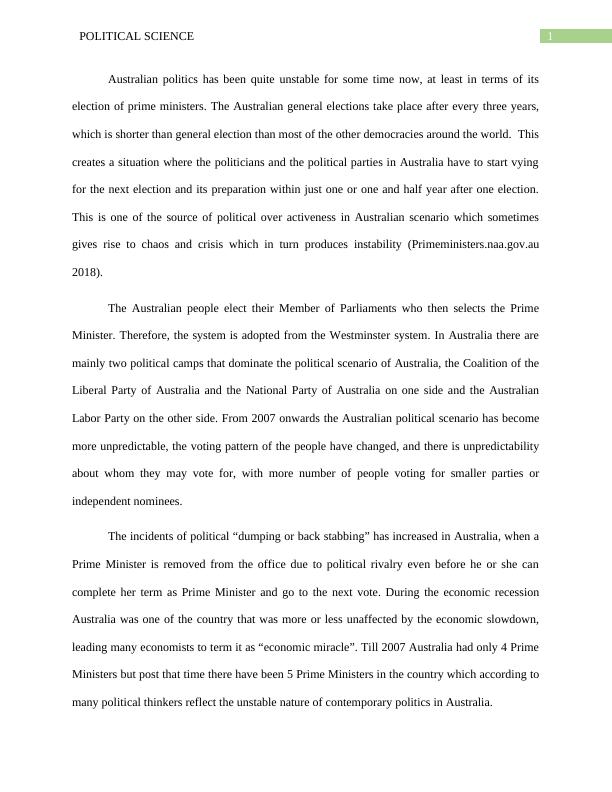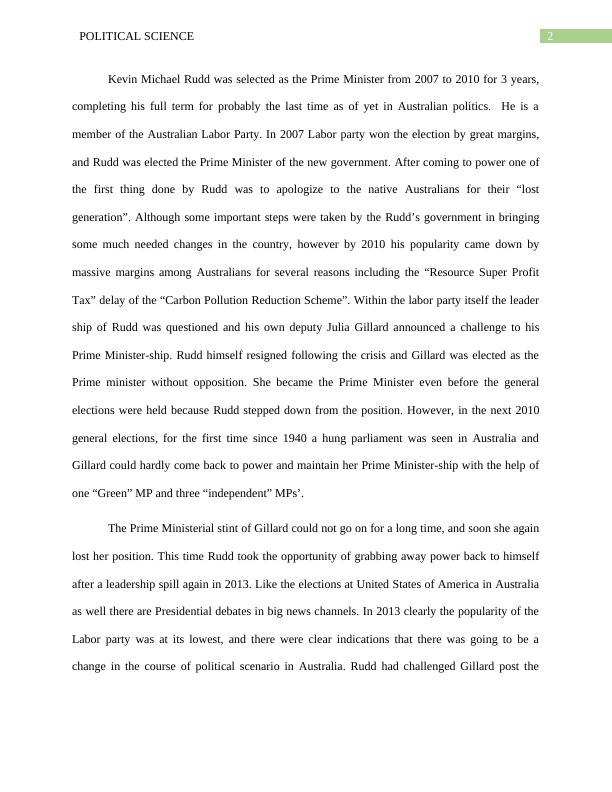Frequent Changes in Australian Prime Ministers: An Analysis
6 Pages1554 Words185 Views
Added on 2023-06-14
About This Document
This article analyzes the frequent changes in Australian Prime Ministers and their impact on the country's administrative structure and policies. It discusses the two dominant political camps in Australia, the instability caused by short election cycles, and the incidents of political dumping or backstabbing. The article also provides a brief overview of the Prime Ministers who have held office since 2007 and their stints in power. The impact of frequent changes on administrative decision-making and policy implementation is also discussed.
Frequent Changes in Australian Prime Ministers: An Analysis
Added on 2023-06-14
ShareRelated Documents
End of preview
Want to access all the pages? Upload your documents or become a member.
Impact of Change in Prime Ministers in Australia
|9
|2456
|363
Factors Contributing to the Change of Prime Ministers in Australia in the Last Decade
|9
|2714
|456
Introduction to Politics and Government
|9
|2460
|492
Australian Changing Dynamics
|9
|2256
|460
Effectiveness of Barrack Obama election adverts in Australian political context
|5
|869
|47
Sociology Assignment | New
|7
|1671
|21



